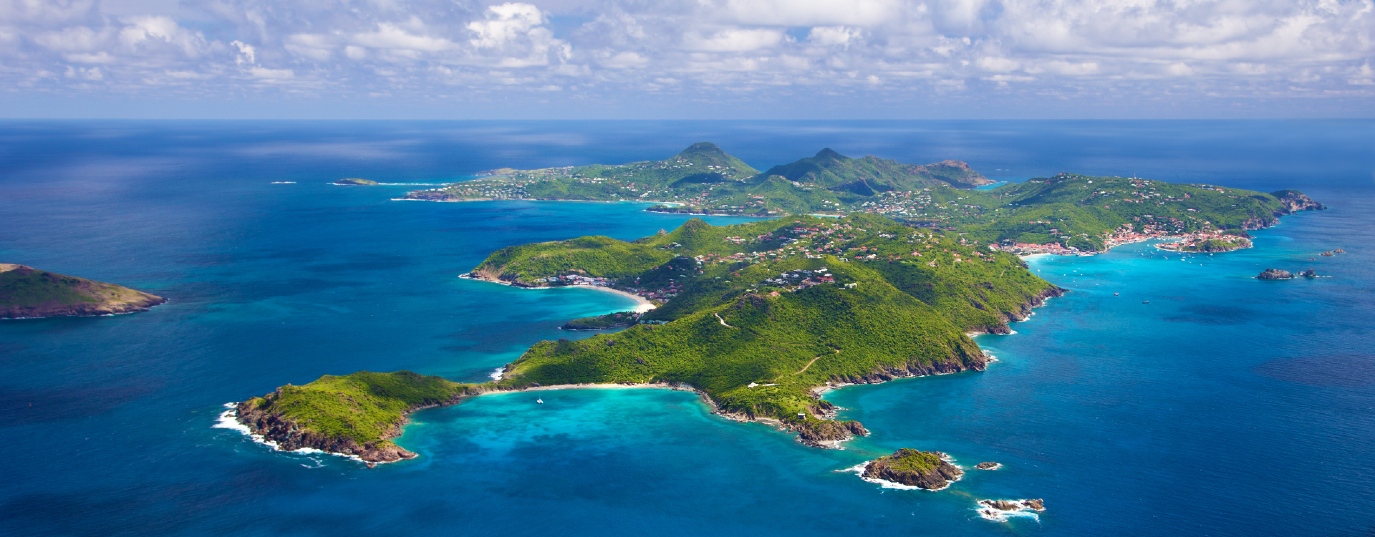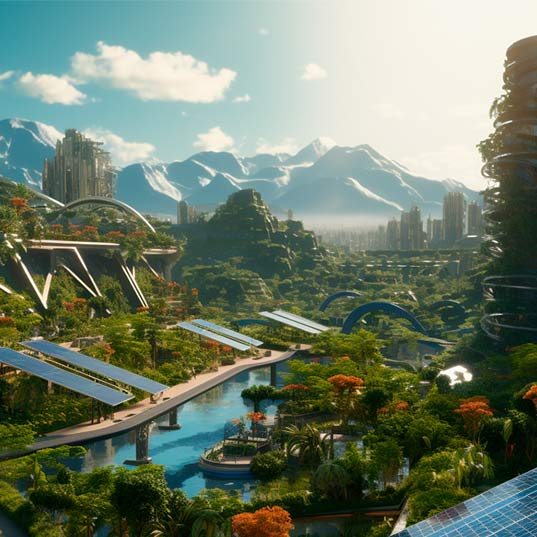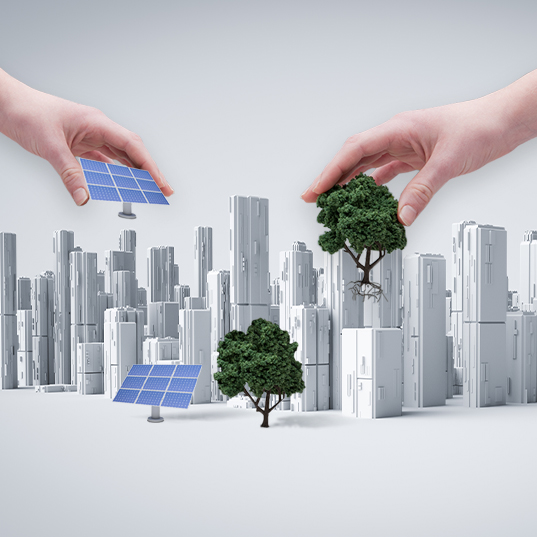Renewable energies in the sustainable development of islands
This is how small islands and ocean states are committed to renewable energies to combat climate change and promote their sustainable development
Big changes can take place in the most unexpected places. Or in the smallest. Small Island Developing States (SIDS) account for only one percent of both global GDP and global greenhouse gas emissions. However, small islands are at the forefront of many measures to do with climate action and are a benchmark in some measures for sustainable development. Confronting huge islands of rubbish in the oceans, we also find Island Developing States that are committed to sustainability.
This was stated in a report by the International Renewable Energy Agency (IRENA) earlier this year. The document highlights the growth of renewable energies in island states in recent times.
Islands and renewable energy
Islands are giving a major boost to the energy transition by supporting renewable energies. These small pieces of land surrounded by water are taking advantage of their geographical features to install renewable energies and accelerate their sustainable development.
Hydropower, for example, can be developed on mountainous islands where it often rains (and which have a large amount of rainfall). Biofuels derived from coconut, palm or sweet sorghum oils would enable local economies to thrive and reduce dependence on fossil fuel imports, helping islands to be sustainable. In addition, ocean energy from the action of tides, waves or algae – even though these are still in an early stage of development – can bring great benefits to SIDS.
Total installed renewable energy capacity in all SIDS represented around 5.3 GW at the end of 2019, of which 665 MW was installed in the last year. This represents a 14.4 % increase, double the global growth of 7.6 %, over the same period.
Renewable energies and sustainable island development
 According to IRENA, in addition to the data provided by the SIDS Lighthouses initiative, The Clinton Foundation and Greening the Islands, the boost from renewable energies in these territories has spread to other sectors that, in principle, have nothing to do with energy: agriculture, health, education etc. It has promoted socio-economic development, job creation and gender equality, among other aspects related to the Agenda 2030 goals.
According to IRENA, in addition to the data provided by the SIDS Lighthouses initiative, The Clinton Foundation and Greening the Islands, the boost from renewable energies in these territories has spread to other sectors that, in principle, have nothing to do with energy: agriculture, health, education etc. It has promoted socio-economic development, job creation and gender equality, among other aspects related to the Agenda 2030 goals.
The experience of Puerto Rico, Seychelles and Antigua and Barbuda can be highlighted as examples of sustainability.
Solar energy saves lives: Puerto Rico
Four years ago, Hurricane Maria devastated Puerto Rico. The intensity of the hurricane and the destroyed state of the island's infrastructure led to a devastating humanitarian crisis. The human impact on global warming causes atmospheric phenomena to become increasingly violent, resulting in natural disasters such as Hurricane Maria. The damage cut off electricity and disrupted access to health care for millions of people.
Solar Saves Lives, a not-for profit organisation, has been working since then to ensure that health centres continue to care for their patients even if the power grid goes down. How? By installing solar systems and batteries in community health clinics throughout Puerto Rico. An example that helps make the island more sustainable. These health centres are part of the Network of the Puerto Rico Primary Care Association, and are dedicated to providing services to those without insurance or the ability to pay. Many of these clinics are located in remote areas and are the only source of health care for the surrounding population.
Also, the #50%conSOL project seeks that 50% of the electrical energy consumed in the country is produced with the sun by installing photovoltaic panels on the roofs of homes, businesses, companies and public buildings.
Solar energy promotes education: Seychelles
90 % of Seychelles' energy needs depend on oil. A fossil fuel that they have to import, which comes at a significant economic cost to the country and is also their main source of greenhouse gas emissions.
However, Seychelles has great potential to replace some of the oil-generated electricity with solar power systems. The initiative of the Seychelles Energy Commission provides for the installation of solar panels on all public schools located on the three main islands of Seychelles (Mahe, Praslin and La Digue).
In addition to promoting a significant portion of the country's education system, the project has in mind additional socio-economic objectives such as reducing greenhouse gas emissions and generating interest in renewable energies among children attending schools, including future job opportunities in the sector.
Antigua and Barbuda and sustainable mobility
The case of Seychelles is no exception. 90 % of transport on SIDS depends on fossil fuels, according to IRENA. The import of fossil fuels makes SIDS vulnerable to international oil price fluctuations. As a solution, IRENA is currently developing an electric mobility roadmap for Antigua and Barbuda. The goal? To achieve 100 % ecological transport on the island by 2030.
Rapa Nui, the island where the future is in the Sun
This island has been on the brink of environmental collapse on several occasions: historically indiscriminate felling of trees, illegal fishing, the increasing overpopulation of the island, tourism, waste abandonment and environmental pollution have threatened it for years.
However, the sustainable future is also making its way to Easter Island, which already has its first photovoltaic power plant connected to the Rapa Nui power grid and the first to provide this place with electricity from renewable energy. A solar plant that produces an approximate average of 200 MWh per year, avoiding the direct emission of about 135 tons of CO anuales per year.
Majorca and green hydrogen
In this regard, the Spanish island of Majorca, located in the Mediterranean Sea, also hosts a project that seeks to make its transport and its economy greener. As green as its champion: Green hydrogen.
ACCIONA has given a boost to the industrial project Power to Green Hydrogen, thanks to which the fuel is intended to have a wide variety of applications on the island. For example, in the supply of fuel to bus and vehicle hire fleets using fuel cells powered from a “hydrogeneration” service station built for this purpose, the generation of heat and energy for commercial and public buildings or the supply of back-up energy to ferries and port operations. This is one of the possible functions of green hydrogen, which can have a wide variety of uses as renewable energy.
Renewable resources on sustainable islands, such as wind, solar and marine energy, tend to be good and accessible. As such, these islands are an ideal platform for testing new technologies or implementing existing technologies and, in this way, driving the sustainable development of these territories.







